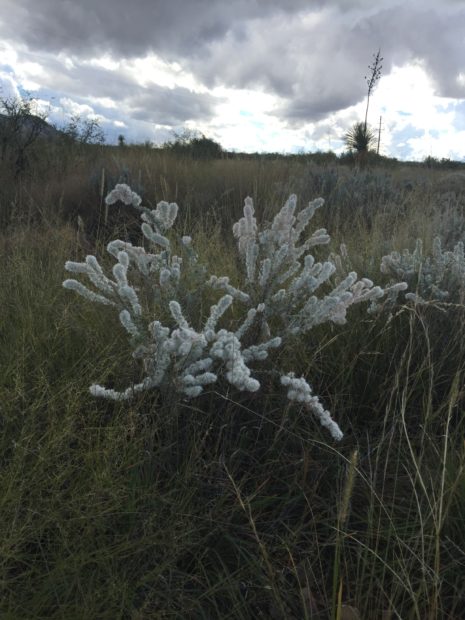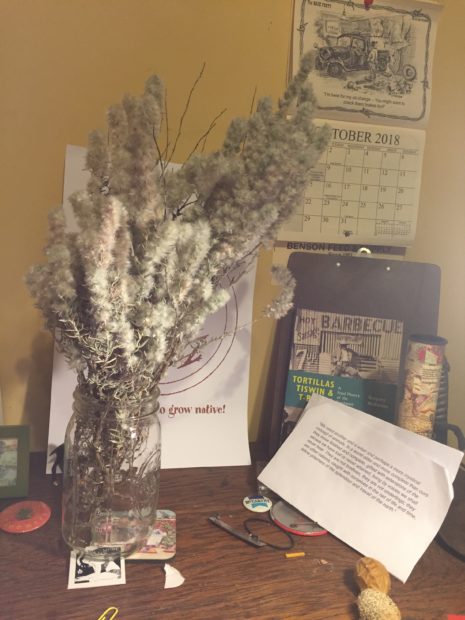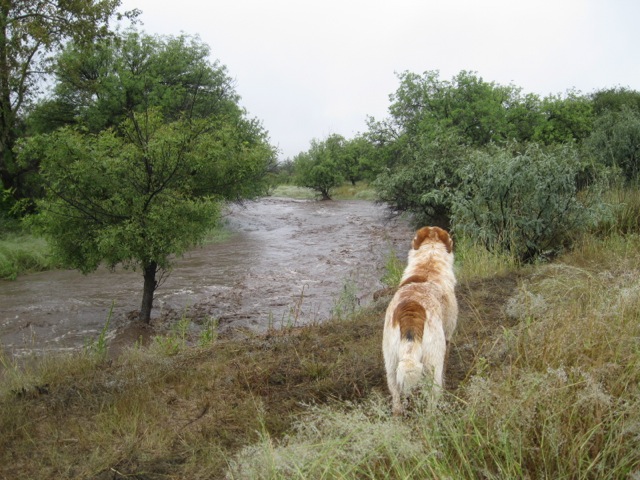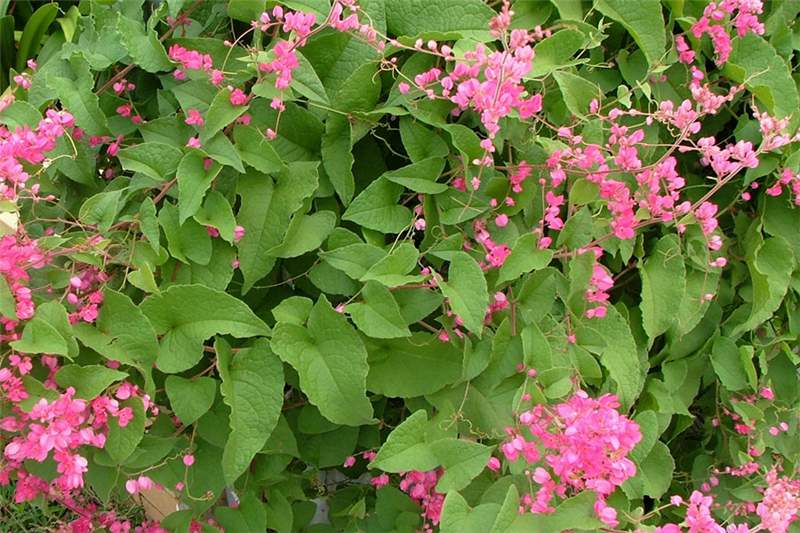I think it’s fascinating that there are several species of winter fat found in Eurasia and Europe. That’s where the genus was first described by a German botanist in the 1770s and named in honor of the Russian explorer and naturalist Stepan Krascheninnikov. And it’s probably just me, but when you add the ia to make the Latinized botanical name Krascheninnikovia, you get seven syllables. I love words or names with seven syllables…okay, it is just me.
Anyway, the specific epithet for our North American winter fat is lanata and refers to the wooly seed stalks, which by the way are pretty neat in a dry floral arrangement along with some buckwheat (Eriogonum spp…maybe wrightii) and a native bunch grass like bull grass (Muhlenbergia emersleyi). Okay, that’s just me.
I find winter fat (it can be winterfat if you prefer) in alkaline fields or mesas near favorite limestone slopes. It’s always mixed in with grasses and other interesting plants like littleleaf sumac (Rhus microphylla) or soaptree yucca (Yucca elata)

The photos are mine. Dark storm clouds were overhead and large rain drops were splattering me while I was taking them. I like how the lighting enhances the wooly white seed heads. I’m thinking winter fat would be a nice addition to a moonlight garden… I know, that’s just me…and how do you like the wooly seed head bouquet on my desk? Cool right? Very cool.


Petey gets very excited about the flight of male Horse Lubber grasshoppers.

I call Antigonon leptopus queens wreath, because that’s the name I first learned for it. If you looked up queen’s wreath you will find...

The genus is now Hesperocyparis, but back in the olden days I learned the rough bark Arizona cypress of southeastern Arizona as Cupressus arizonica...